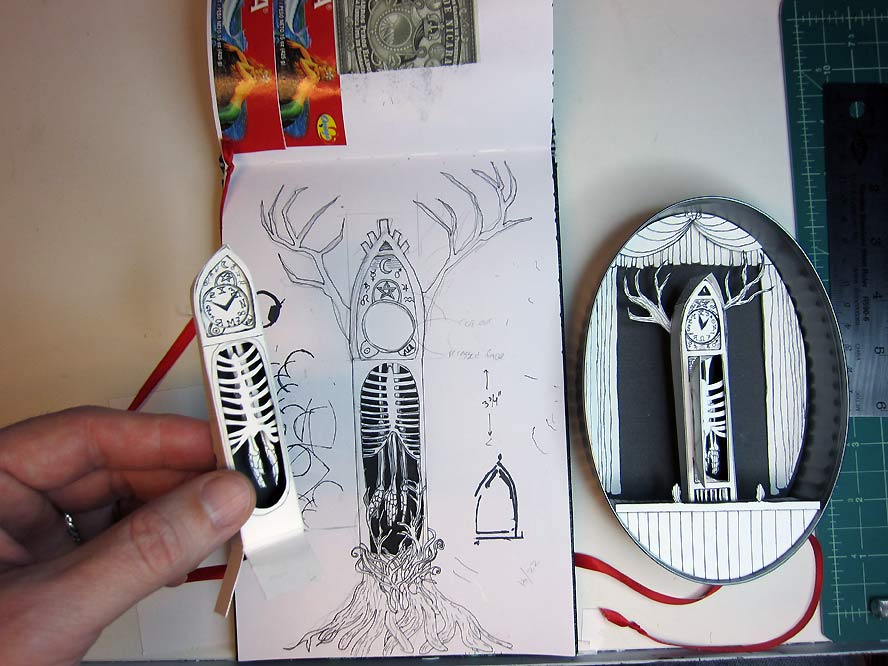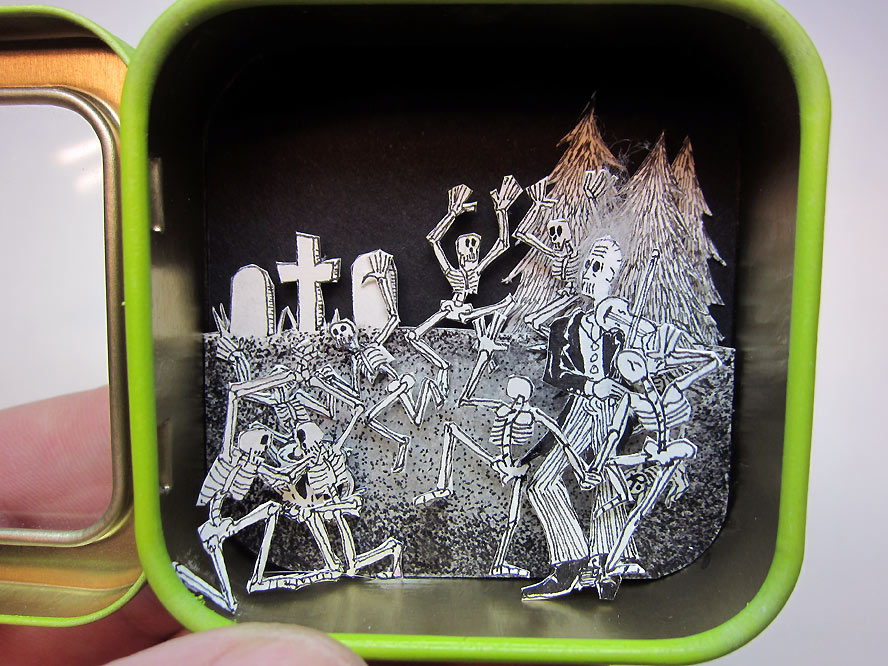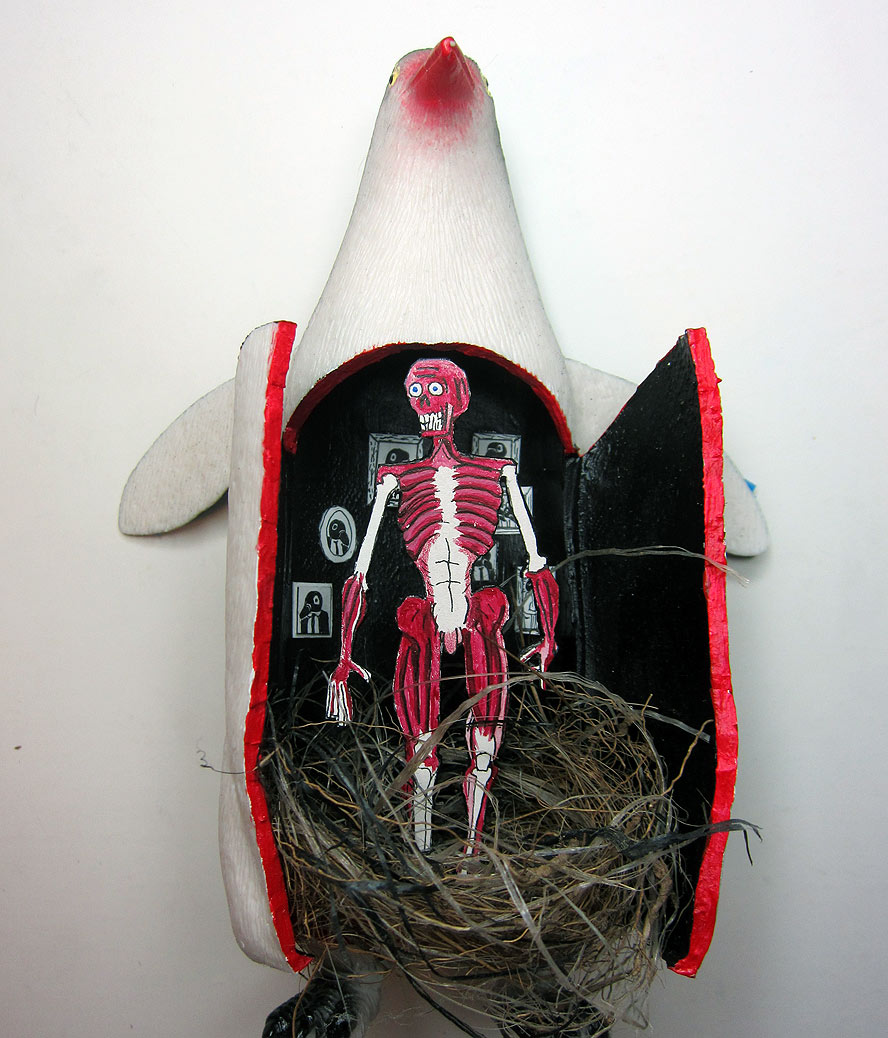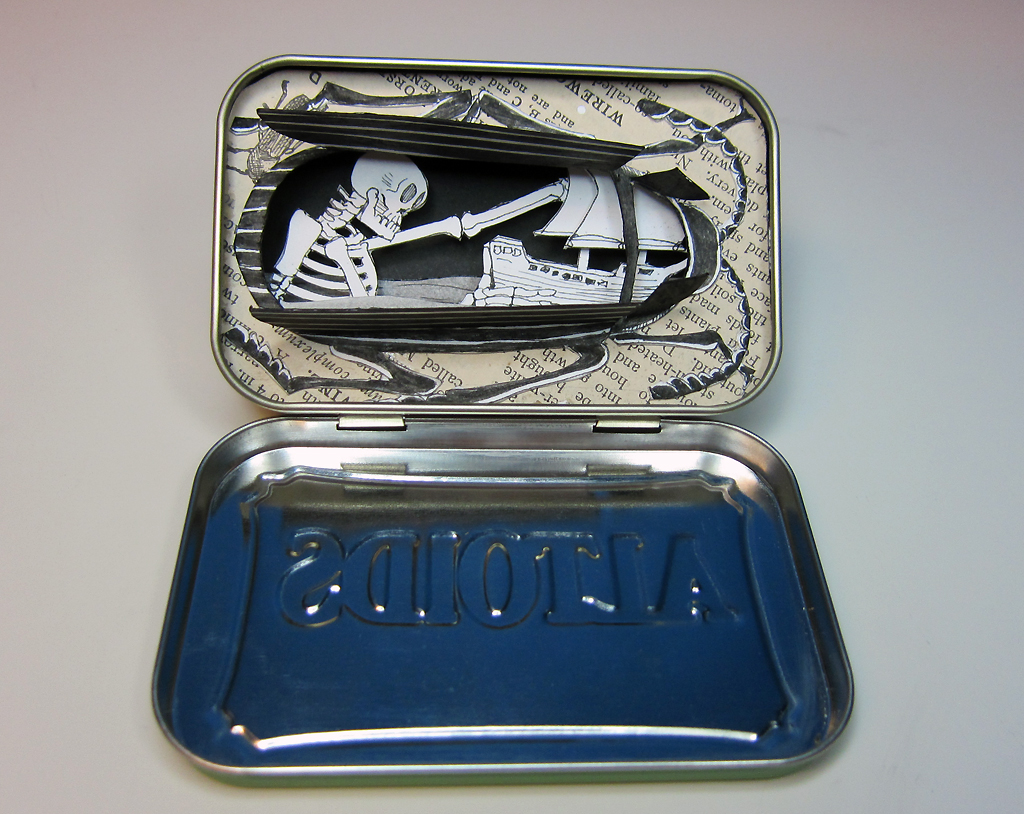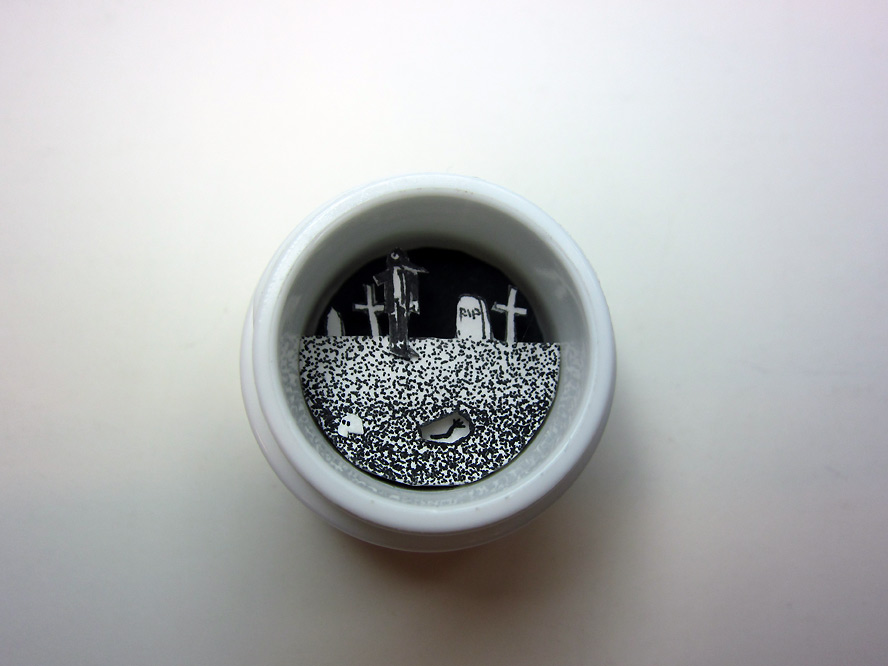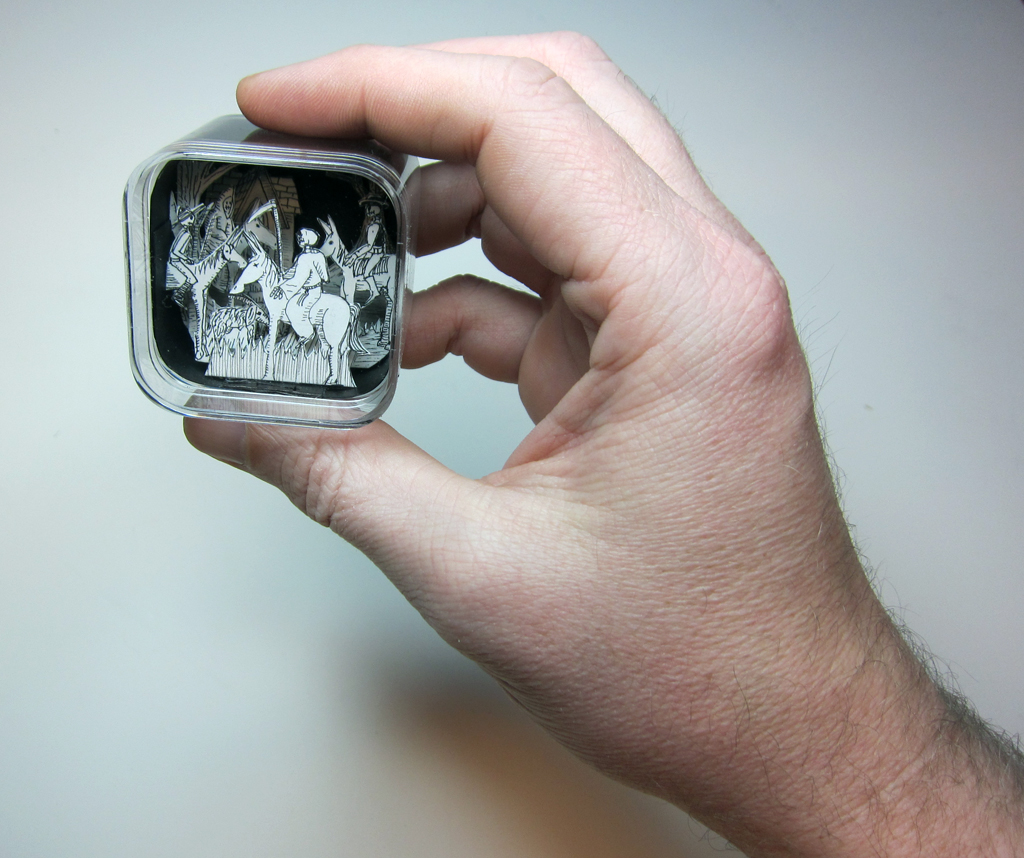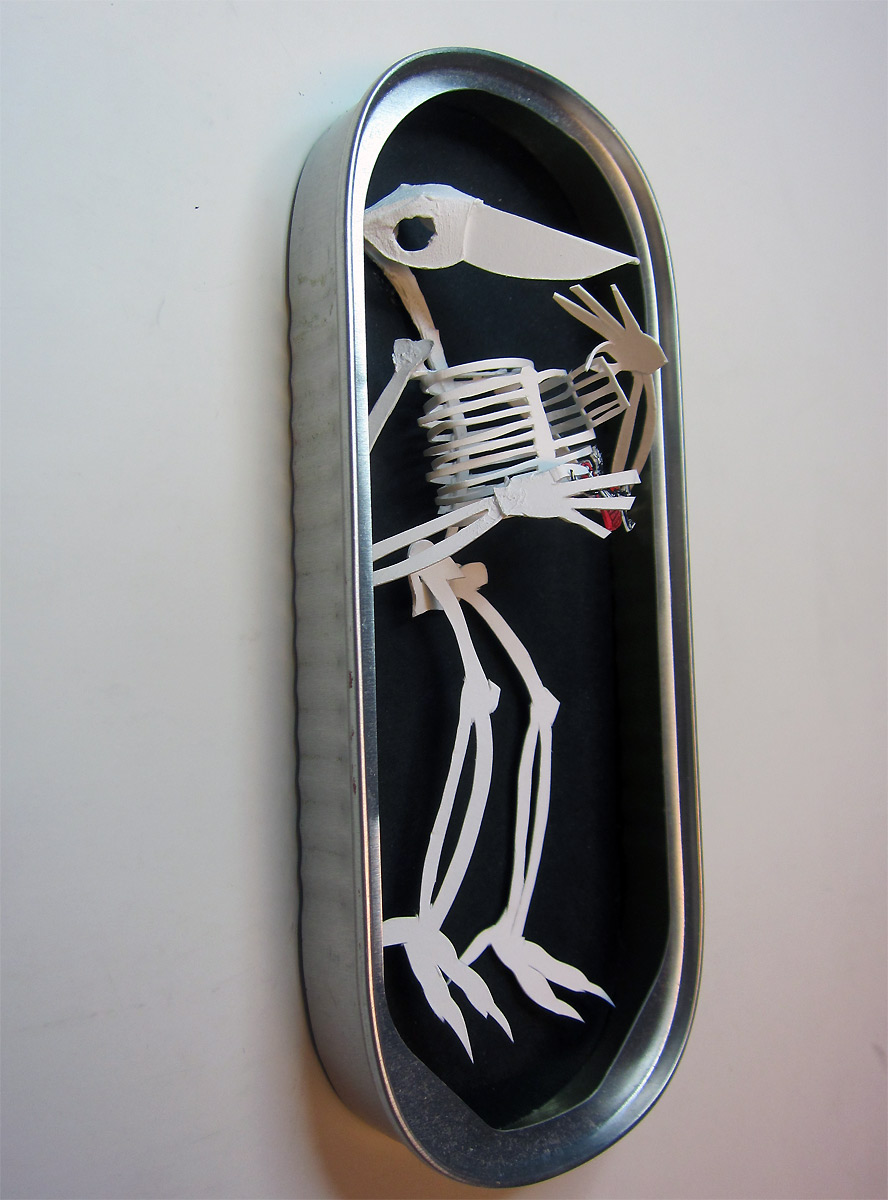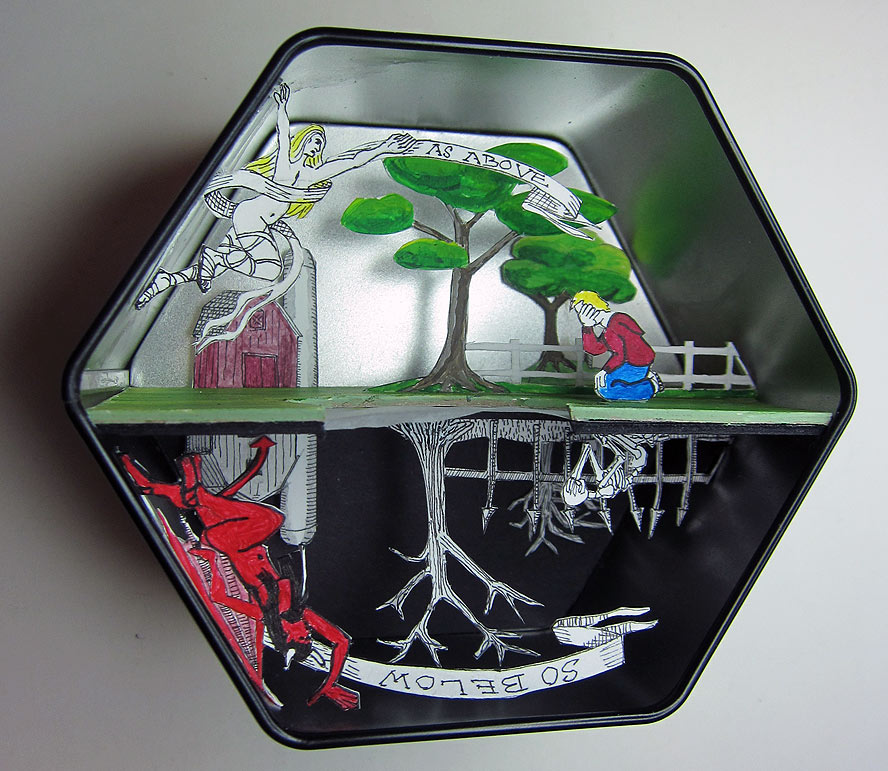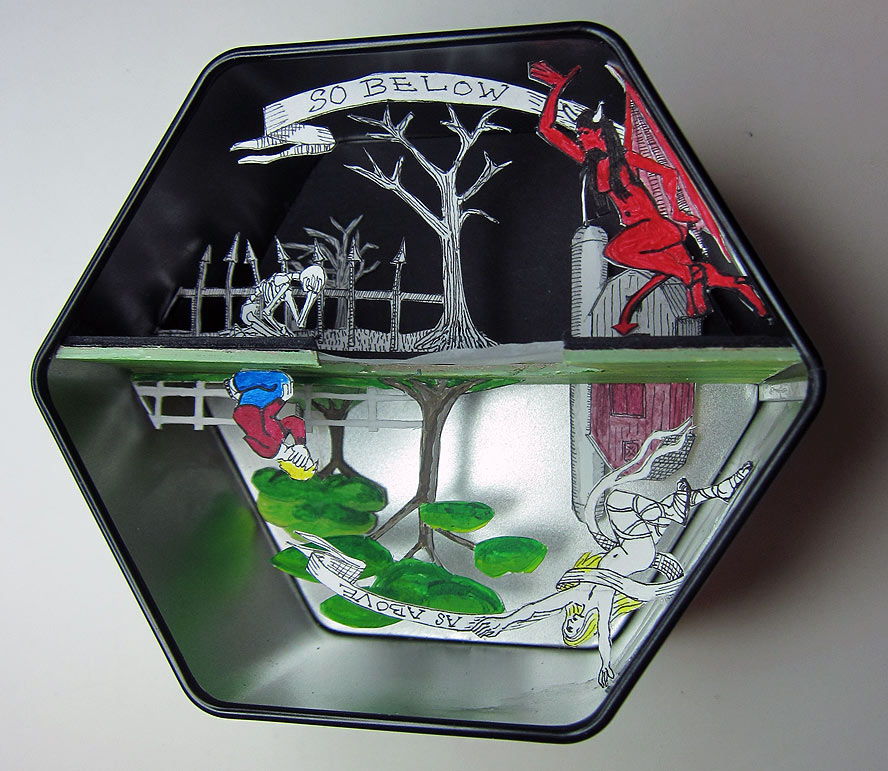Member of the Order of the Good Death Jim Doran is a small-scale death wizard, sneaking little mortality tableaux into Altoid tins, Carmex lip balm containers, and sardine cans. He hand-draws and X-Acto carves each of these wee paper masterpieces. Many of them will be on display at the School 33 Art Center in Baltimore until October 27th before several pieces move on to the American Visionary Art Museum.
A little birdy (a tiny one, intricately carved out of paper) tells us that Jim will be doing some animation for the Ask a Mortician series in the near future as well. I caught up with Jim — which means I was like, “Hey Jim, I’m gonna email you these questions, answer them, OK?” — recently to ask about his work.
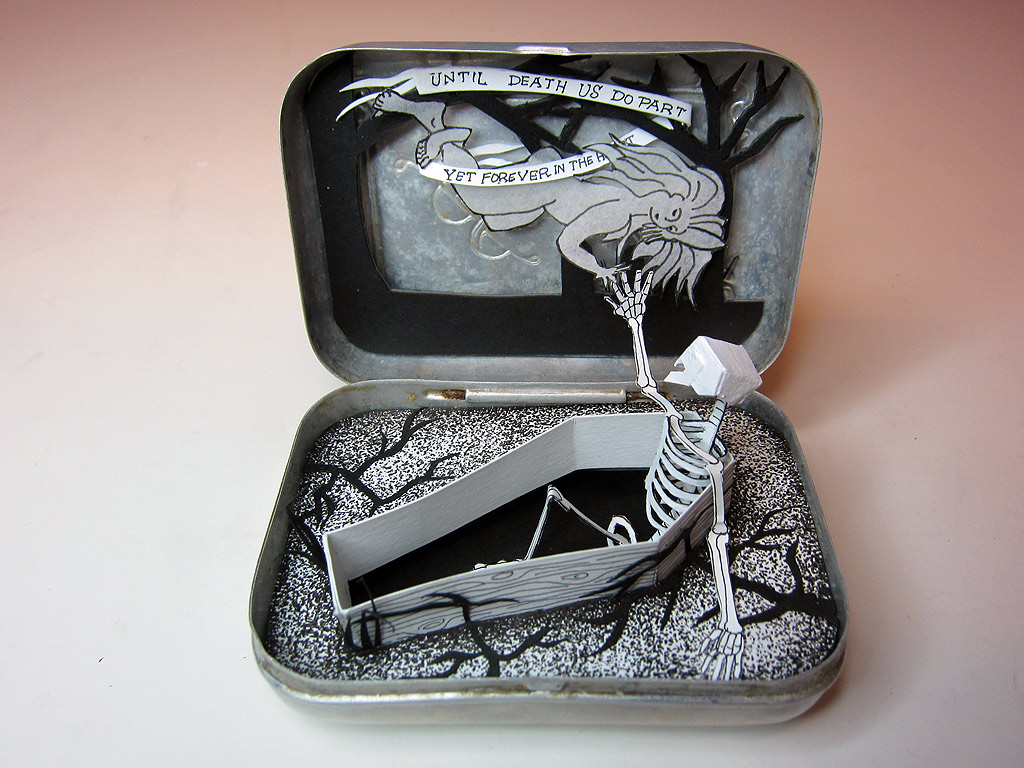
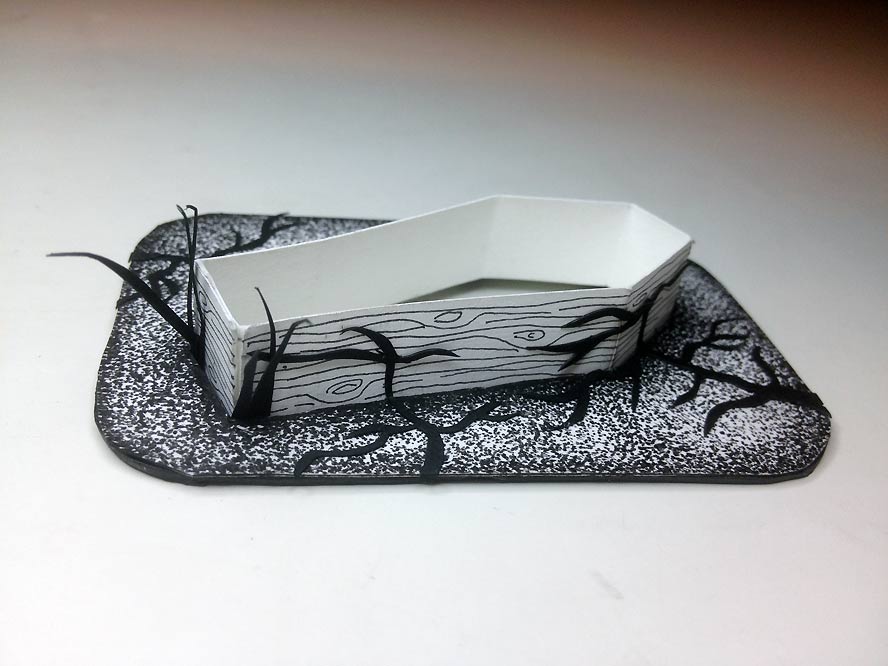
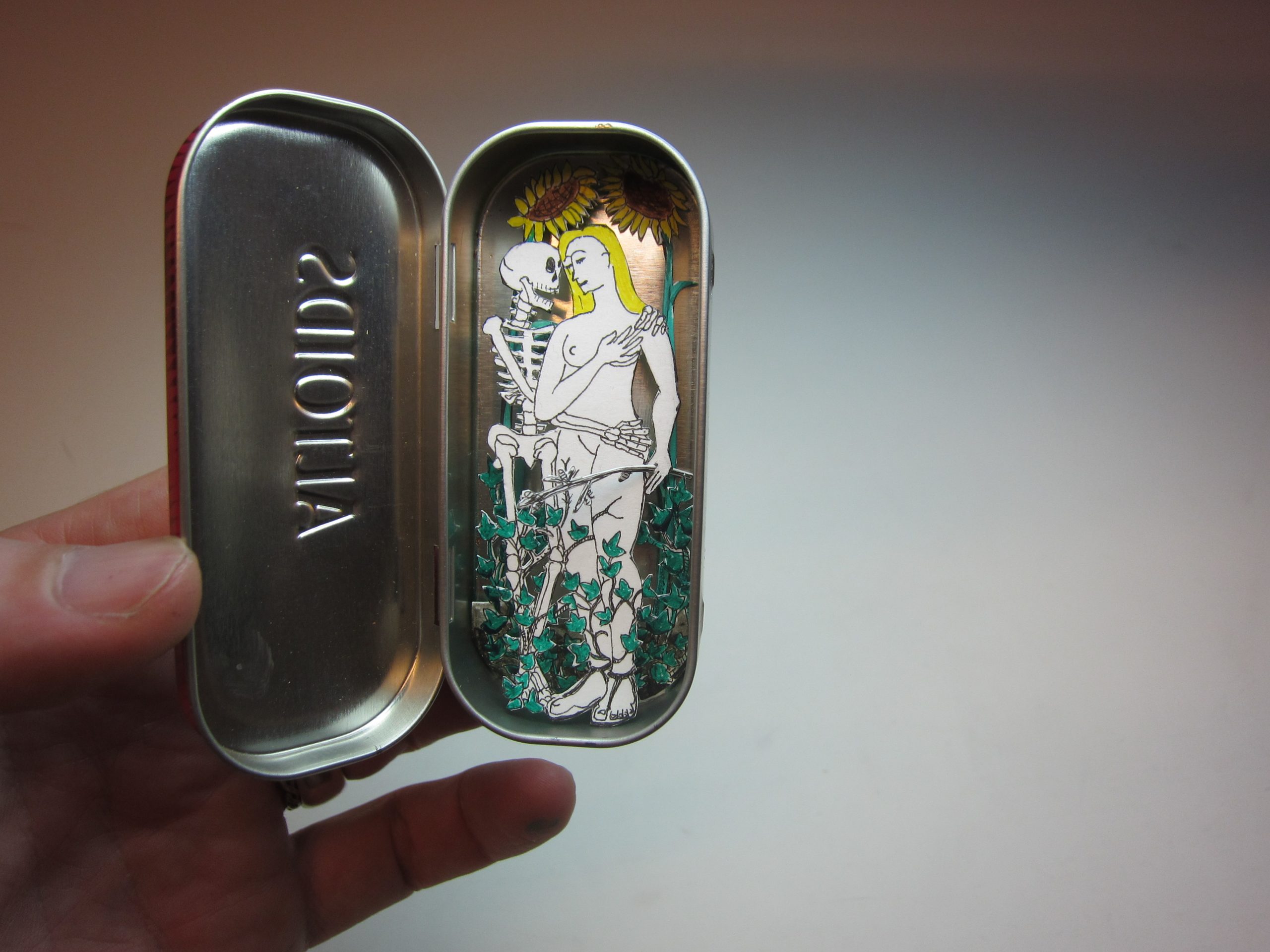

What about death inspires you? Why is it your muse?
I honestly don’t understand why Death isn’t everyone’s muse. We all carry the Grim Reaper in us, our very own skeleton.
I worked in a geriatric hospital/nursing home setting for a few years as a music therapist, and I knew many people who died there. It changed the way I think about music, art and how we live our lives. I think the world would be a better place if everyone had to work in a nursing home for a few years.
Hand cramps. They must be an issue. Discuss.
Not so much, although I have a tendency to grip the actual blade itself in an attempt to control very tiny cuts. I’ve sliced myself a few times, which makes me bleed on the work and then I need to start over.
A bigger issue is the number of X-Acto blades I use. I buy them in 100-blade packs. I used about 70 getting ready for this show — I really only need the very tip, and they are delicate. They snap off and dull rather quickly.
Why small? Why not giant paper cutouts that scream, “Look at me, I’m a huge paper skeleton!?”
Size doesn’t matter, Caitlin. I have a 12-ft. circus peanut in my yard that I made several years ago. The thing about giant art is that it needs to be stored once you make it.
When I started doing the paper cutouts, I worked at a normal size and then set them up to photograph them. I am very interested in shadows and depth of field. But they aren’t easy to display. It made perfect sense to me to start working on a tiny scale when I thought about the problem.
There’s something satisfying about working on a tiny scale. Each box is a tiny theater. I like working inside of these small spaces.
If you got a grant for $500,000, what would your dream large-scale art project be?
I have this story in my head that I’d love to tell in dioramas. If I had a grant like that, I’d do the whole thing from start to finish in recycled containers and have it professionally photographed for an awesome book. I’d then sell the art/donate the art and give the money away to good causes.
